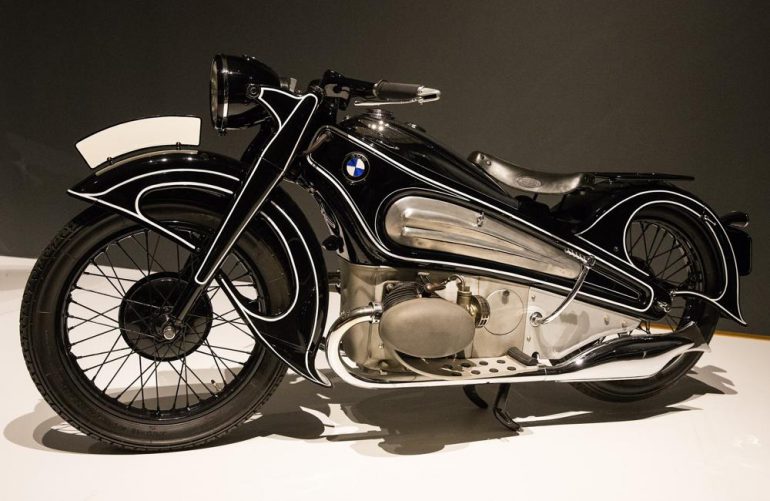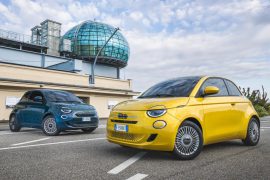MOTORRAD: Der BMW R 7: Der Art-Déco-Prototyp von 1934
MOTORBIKE: The BMW R 7: The Art Deco prototype from 1934
Die Geschichte der Motorradwelt ist reich an Ikonen, die das Design und die Technik der Branche maßgeblich beeinflusst haben. Ein solches Meisterwerk, das bis heute ein Symbol für Innovation und Pioniergeist ist, ist die BMW R 7 aus dem Jahr 1934. Dieser Prototyp steht nicht nur für eine Ära des Fortschritts, sondern auch für den kühnen Geist der Ingenieure und Designer, die ihn geschaffen haben.
Eine Zeit des Wandels:
Die 1930er Jahre waren eine Zeit des Umbruchs, nicht nur in der Weltgeschichte, sondern auch in der Motorradindustrie. In dieser Zeit wagte BMW Motorrad mit der Vorstellung des Prototyps der BMW R 7 einen kühnen Schritt: Mit einer beeindruckenden Kombination aus revolutionärem Design und technologischer Innovation ebnete die R 7 den Weg in die Zukunft des Motorradbaus.
The history of the motorbike world is rich in icons that have had a significant impact on the design and technology of the industry. One such masterpiece that remains a symbol of innovation and pioneering spirit to this day is the BMW R 7 from 1934. This prototype not only represents an era of progress, but also the bold spirit of the engineers and designers behind its creation.
A time of change:
The 1930s were a time of upheaval, not only in world history, but also in the motorbike industry. It was during this time that BMW Motorrad took a bold step when it unveiled the prototype BMW R 7. With an impressive combination of revolutionary design and technological innovation, the R 7 paved the way for the future of motorbike construction.
1934 war die Zeit des Art Deco und auch das Design des Ingenieurs Alfred Böning folgte diesen Ideen. Ein Design, das damals Stromlinien-Design genannt wurde und im Automobilbereich besonders stark war. Der von Leonhard Ischinger neu konstruierte Boxermotor hatte 793 cm³ und 35 PS.
1934 was the time of Art Deco and the design by engineer Alfred Böning also followed these ideas. A design that was called streamline design at the time and was particularly strong in the automotive sector. The boxer engine, newly designed by Leonhard Ischinger, had 793 cm³ and 35 hp.
Der Motor, auch als 205/1 bekannt, hatte hängende Ventile und war lang eingebaut. Nicht zu vergessen, dass Zylinder und Zylinderkopf des Viertaktmotors beim Prototyp in einem Stück gegossen waren. Die Idee dahinter: Die Idee war, die anfällige Kopfdichtung zu umgehen. Der Motor wurde von Hand geschaltet. Eine Besonderheit, die heute nicht mehr bekannt ist. Das Werk entschied sich gegen den offiziellen Bau der BMW R 7 und gab dem sportlicheren R5 den Vorzug.
Heute wäre die BMW R 7 ein Klassiker. Auf jeden Fall ist er das Vorbild für viele Umbauten, die sich am Art-déco-Design orientieren.
The engine, also known as 205/1, had overhead valves and was installed long. Not to forget that the cylinder and cylinder head of the four-stroke engine in the prototype were was cast in one piece. The idea behind it: The idea was to bypass the susceptible head gasket. The engine was hand-shifted. A feature that is no longer known today. The factory decided against officially building the BMW R 7 and gave priority to the sportier R5.
Today, the BMW R 7 would be a classic. In any case, it is the model for many custom conversions that take Art Deco design as their inspiration.
BRAND: BMW AG
virtualdesignmagazine Michael Hiller
If you like our magazine and would like to be informed about the latest articles, please follow us at
https://www.facebook.com/VirtualDesignMagazine/
















